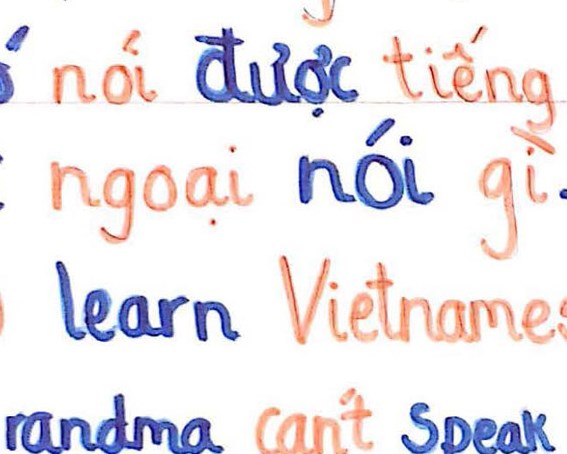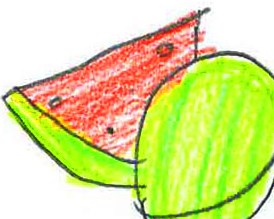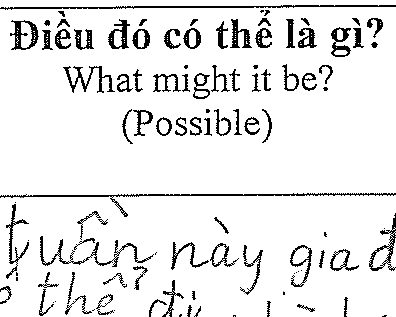Languages: Vietnamese - Satisfactory - Years 3 and 4
Portfolio summary
This portfolio of student work shows that the student uses Vietnamese to interact with the teacher and peers to exchange information and experiences relating to themselves, their family and friends (WS1, WS3, WS5, WS7, WS8). The student uses formulaic expressions to participate in simple transactional exchanges and collaborative activities, and to seek clarification, assistance or advice in everyday classroom routines (WS7). When interacting, the student uses features of Vietnamese pronunciation, including tones, vowels and consonants (WS5, WS7). The student locates information relating to familiar contexts and presents it in modelled spoken, written and visual texts (WS4). The student responds to imaginative texts by identifying favourite elements and making simple statements about settings, characters or events, and creates simple imaginative texts using formulaic expressions and modelled language (WS1, WS3, WS5, WS8). The student uses common action verbs, adjectives and adverbs to create short, simple sentences about their routines and interests (WS1, WS2, WS3, WS4, WS5, WS7, WS8). The student uses vocabulary related to school, home and everyday routines (WS1, WS2, WS3, WS5, WS7, WS8). The student uses appropriate word order and personal pronouns in simple spoken and written texts (WS1, WS2, WS3, WS4, WS6, WS7, WS8). The student translates and compares common Vietnamese and English expressions (WS7) and creates simple bilingual texts for classroom use (WS5, WS6). The student describes how language involves behaviours as well as words and shares their experiences of communicating in Vietnamese- and English-speaking contexts (WS7).
The student identifies the tones of the Vietnamese language and uses tone markers when writing (WS1, WS2, WS3, WS4, WS5, WS6, WS7, WS8). The student identifies the features and purpose of a range of familiar texts. The student provides examples of how language use varies according to the participants, social context and situation, and identifies differences between ways of showing politeness in Vietnamese- and English-speaking contexts. The student identifies how languages change over time, providing examples of Vietnamese words borrowed from other languages such as English and French. The student compares Vietnamese and English language use and cultural practices, identifying culture-specific terms and expressions.







